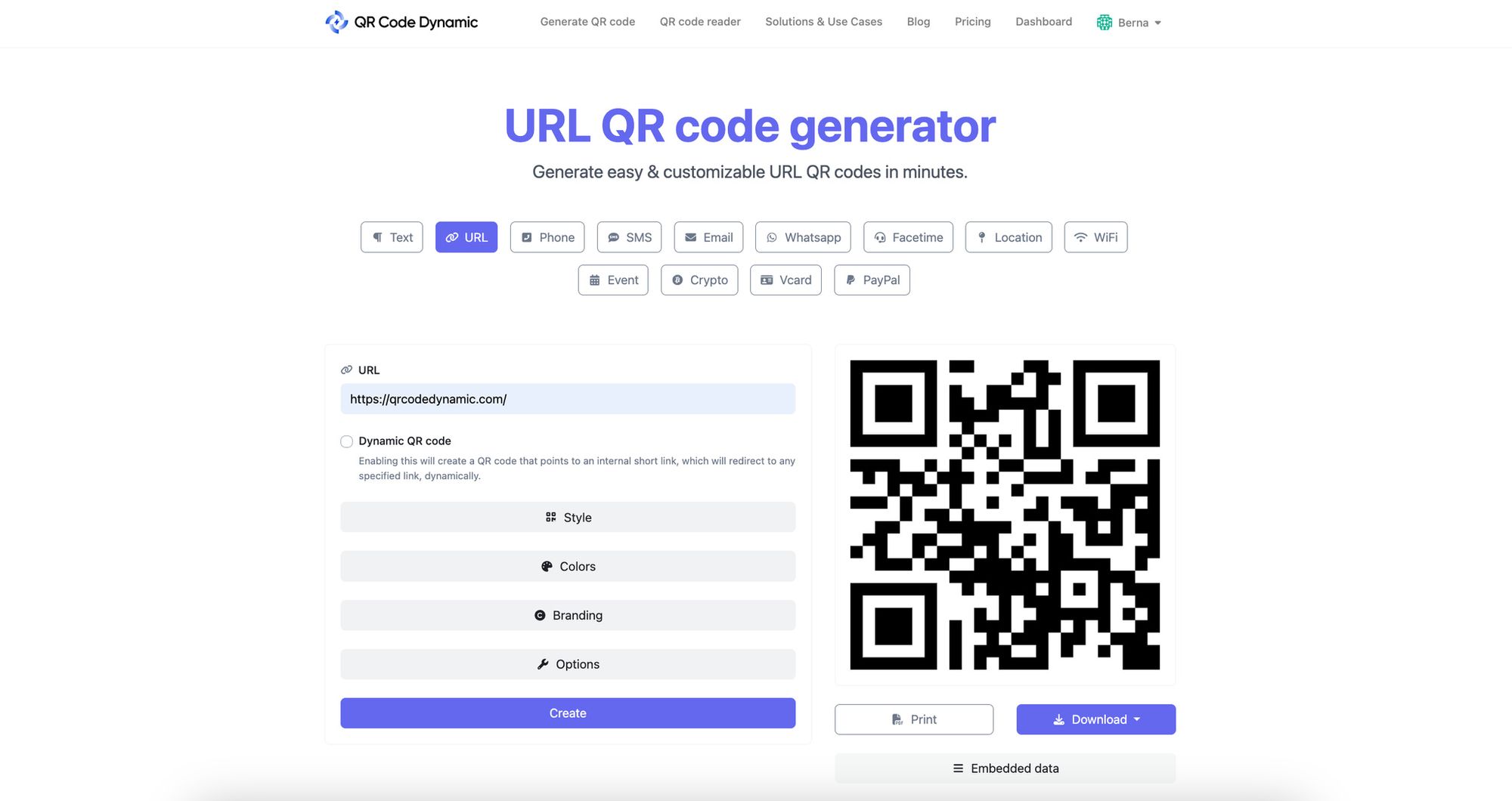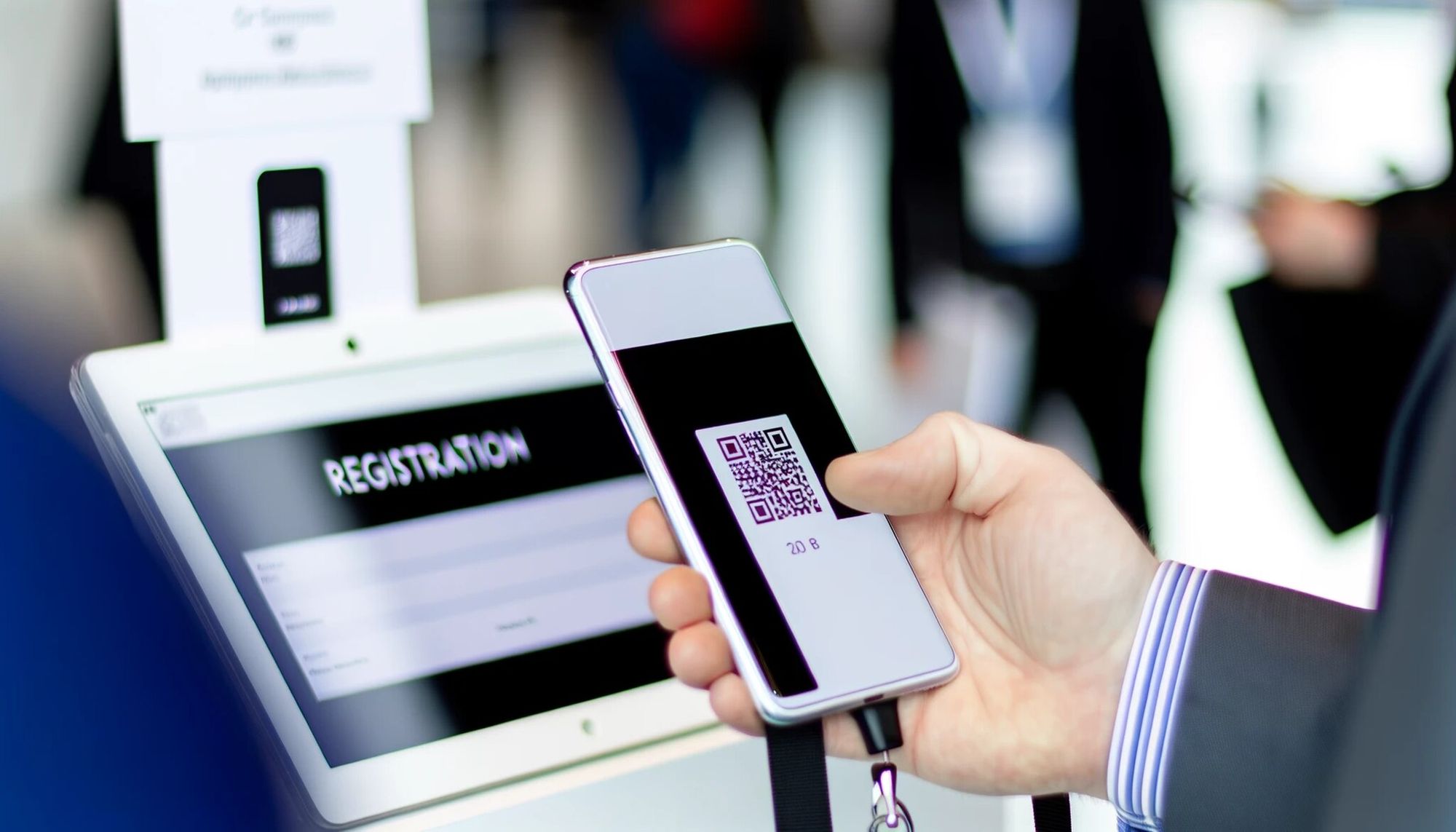Using QR codes for registration processes has evolved a once monotonous task into a streamlined, engaging experience.
Thus, we'll learn how to create a registration QR code, its applications, and its advantages.
Benefits of Using QR Codes for Registration
The QR code is one innovative tool that stands out for its efficiency and versatility in the registration process. Therefore, we can talk about the numerous advantages QR codes bring to the table as follows:
→ Speed and Efficiency

One of the most compelling reasons to incorporate QR codes into your registration processes is the remarkable speed and efficiency they offer:
- Instant Access: With a simple scan, users are immediately directed to the registration form, bypassing the need to manually type in URLs or navigate through multiple web pages.
- Quick Processing: QR codes can significantly expedite check-ins at events or any registration-required activity, reducing queues and wait times, which enhances overall user satisfaction.
- Automation at Its Best: By automating the data entry process, QR codes minimize manual interventions, making the registration process smoother and faster for both organizers and participants.
→ Ease of Use
The beauty of QR codes lies in their simplicity and accessibility:
- User-Friendly: Scanning a QR code is straightforward, requiring just a smartphone camera, making it accessible to a broad audience regardless of their tech savvy.
- Versatility: QR codes can be used across various platforms, including digital and print media, allowing for flexible and creative placement strategies to maximize visibility and engagement.
- Guided Experience: By linking directly to a targeted landing page, QR codes can provide a guided and personalized registration experience, leading to higher completion rates.
→ Cost-Effectiveness
Incorporating QR codes into your registration strategy is not only effective but also economically sound:
- Reduced Material Costs: By transitioning to digital QR codes, you can save on printing and material costs associated with traditional registration methods.
- Efficiency Savings: The time saved through streamlined processes translates into cost savings, allowing you to allocate resources more effectively elsewhere.
- Scalability: QR codes can be generated at virtually no cost, making them a scalable solution for events and registrations of any size, from intimate gatherings to large-scale conventions.
→ Improved Data Accuracy
Data accuracy is crucial for effective marketing and follow-up. QR codes enhance this aspect by:
- Minimizing Human Error: Automatic data capture via QR codes reduces the likelihood of errors associated with manual data entry, ensuring more reliable information.
- Real-Time Updates: QR codes can be linked to dynamic content, allowing for real-time updates and changes to the registration process without generating new codes.
- Enhanced Analytics: Integrating QR codes with your registration system can provide valuable insights and analytics, helping you better understand participant behavior and preferences.
→ Environmentally Friendly
In an era where sustainability is increasingly important, QR codes offer an eco-friendly alternative to paper-based registration processes:
- Paperless Solutions: By replacing physical forms and tickets with digital QR codes, you reduce paper waste and promote environmentally sustainable practices.
- Energy Efficiency: Digital registrations via QR codes consume less energy compared to the production, transportation, and disposal of paper-based materials.
→ Seamless Integration
QR codes can be effortlessly integrated into your existing marketing and registration frameworks:
- Compatibility: QR codes work well with most registration platforms and CRM systems, ensuring a seamless flow of information and enhancing user experience.
- Customization: QR codes can be customized to reflect your brand identity, adding a personal touch to the registration process while maintaining brand consistency.
→ Enhanced Security
Security is a top priority, and QR codes can be designed to offer a secure registration process:
- Encrypted Data: QR codes can encode sensitive information securely, reducing the risk of unauthorized access.
- Controlled Access: You can set up QR codes to allow access to specific information or registration forms, ensuring that only intended participants can register.
How to Create a QR Code for Registration
Creating a QR code for registration is practical.
By following these straightforward steps, you'll be well on your way to offering a cutting-edge registration experience:
Define Your Objective
Before you begin, clarify what you aim to achieve with your QR code. Is it for event check-ins, membership sign-ups, or access to exclusive content? Your objective will guide the design and implementation of your QR code.
Design Your Registration Form
The destination of your QR code scan is just as crucial as the code itself. Ensure your registration form is:
- User-Friendly: Keep it simple, intuitive, and mobile-friendly.
- Branded: Incorporate your logo, colors, and any other brand elements to create a cohesive experience.
- Relevant: Only ask for necessary information to avoid overwhelming users.
Choose a Reliable QR Code Generator
Numerous online tools can generate QR codes, but not all are created equal. Opt for a reputable QR code generator that offers:
- Customization options: To align the QR code with your brand identity.
- Dynamic QR codes: Allowing you to modify the linked content without changing the QR code itself.
- Analytics: To track scans and gather valuable data on user engagement.
You can use QRCodeDynamic for your dynamic QR codes.
Generate Your QR Code
With your registration form ready, it's time to create the QR code.

- Input the URL: Paste the link to your registration form into the URL part on QRCodeDynamic's URL QR code generator.
- Customize Your Design: Choose colors, add a logo, and make any other design tweaks to make your QR code stand out.
- Test Before Finalizing: Scan the QR code with multiple devices and apps to ensure it is seamlessly directed to the registration form. Click the "Create" button once you finish adjusting your QR code for registration.
Integrate and Distribute
Your QR code is now ready to be shared with the world:
- Strategic Placement: Incorporate the QR code into flyers, posters, emails, social media posts, and any other promotional materials.
- Instructions: Include brief instructions on scanning the QR code, especially if your audience is unfamiliar with the process.
- Accessibility: Ensure the QR code is placed where it's easily accessible and can be scanned without hassle.
How to Use QR Code for Registration

QR codes can simplify and accelerate your registration workflow with different scenarios.
→ Setting Up Registration Requirements
Before diving into QR codes, it's crucial to outline what you need from your registration process:
- Identify Essential Information: Determine the data you need to collect. This could range from basic contact details to more specific information related to your event or service.
- Design Your Form: Create a registration form that is both comprehensive and user-friendly. Ensure it's mobile-responsive, as most users will access it via their smartphones.
- Data Handling and Privacy: Establish how you will store, manage, and protect the collected data, adhering to privacy laws and best practices.
→ Integrating QR Codes with Registration Platforms
Seamlessly integrating QR codes with your registration platform ensures a smooth user journey from scan to submission:
- Direct Link to Registration Form: The QR code should lead straight to your registration form, minimizing clicks and navigation for the user.
- Multi-Platform Compatibility: Ensure the registration form and QR code work across various devices and browsers, offering flexibility to your participants.
- Real-Time Syncing: Integration should allow for real-time data capture and syncing with your backend systems, ensuring up-to-date information at all times.
→ Strategic Placement of QR Codes
The effectiveness of your QR code campaign largely depends on its visibility and accessibility:
- High Traffic Areas: Place QR codes where they're easily seen and accessed by your target audience, such as event entrances, posters, or digital screens.
- Marketing Materials: Incorporate QR codes into your promotional materials, including flyers, brochures, emails, and social media posts, to maximize reach.
- Contextual Placement: Align the placement with the user's journey, ensuring the QR code appears where they are most likely to need or want to register.
→ User Instructions
Clear instructions can significantly enhance the user experience and increase the likelihood of successful scans:
- Scan Instructions: Briefly explain how to scan the QR code, especially if targeting an audience less familiar with the technology.
- What to Expect: Inform users what will happen after they scan the QR code, such as being redirected to a registration form.
- Troubleshooting Tips: Provide simple troubleshooting steps for common issues, like poor lighting or camera focus problems, to help users complete the registration process smoothly.
→ Security Considerations
Protecting user data and ensuring the security of the registration process is paramount:
- Data Encryption: Use encrypted connections (HTTPS) for your registration forms to protect user data during transmission.
- Access Control: Implement measures to control who can access the registration data, limiting it to authorized personnel only.
- Regular Updates: Keep your QR code platform and registration system updated to protect against vulnerabilities and ensure compliance with data protection regulations.
→ Testing and Feedback
Before launching your QR code registration, thorough testing and gathering feedback are essential:
- Comprehensive Testing: Test the QR code across different devices, operating systems, and lighting conditions to ensure it works universally.
- User Feedback: Conduct a trial run with a small group and gather feedback on their experience. Use this insight to make any necessary adjustments.
- Analytics Monitoring: Utilize the analytics features of your QR code generator to track scans and user engagement, allowing you to refine your approach based on real data.
Best Practices for QR Code Registration

Implementing QR codes into your registration process is a smart move that can streamline operations and offer a seamless experience for your users. However, to fully leverage QR codes' potential, it is important to follow some best practices.
These guidelines will help ensure your QR code registration process is efficient, user-friendly, and secure, ultimately enhancing user engagement and satisfaction.
Optimize for Quick and Easy Scanning
Making your QR code easy to scan is the first step in ensuring a smooth registration process:
- Size Appropriately: Ensure your QR code is big enough to be easily scanned. A good rule of thumb is that the scanning distance is approximately ten times the size of the QR code.
- High Contrast: To improve scalability, use a high contrast between the QR code and its background. Black-on-white is typically the most effective.
- Clear Space Around the QR Code: Maintain a clear margin, or "quiet zone," around your QR code, free of text, images, or other distractions that could interfere with scanning.
Ensure Mobile-Friendliness
Given that most users will scan QR codes with their mobile devices, optimizing the user experience for mobile is crucial:
- Responsive Design: The landing page or registration form the QR code links to should be responsive, ensuring it displays correctly on various screen sizes.
- Fast Loading: Mobile users expect quick results. Ensure your landing page loads swiftly to keep their attention.
- Simplify the Form: Keep your registration form concise and straightforward. Minimize the number of fields to only what's necessary to keep the process quick and user-friendly.
Provide Clear Instructions
Don't assume everyone knows how to use QR codes. Including simple instructions can enhance the user experience:
- How to Scan: A brief explanation of how to scan the QR code can be helpful, especially for those who may be less tech-savvy.
- What to Expect: Inform users what will happen after they scan the QR code. For example, "Scan this QR code to register for our event."
Test Thoroughly
Before deploying your QR code, conduct thorough testing to ensure it works as intended:
- Different Devices and Scanners: Test the QR code with various smartphones and QR code scanning apps to ensure broad compatibility.
- Physical and Digital Tests: If the QR code will be used in print, test the physical printed materials. For digital use, ensure it displays correctly on screens.
Maintain Security and Privacy
Respect user privacy and security throughout the registration process:
- Secure Landing Pages: Use HTTPS for your landing pages to protect user data.
- Data Collection Compliance: Ensure your data collection practices comply with relevant privacy laws (e.g., GDPR, CCPA) and inform users how their data will be used.
- Avoid Over-Collection: Only ask for essential information during registration to minimize privacy concerns and streamline the process.
Leverage Branding Opportunities
QR codes offer a unique opportunity to reinforce your brand identity:
- Customize Your QR Code: Many QR code generators allow you to incorporate brand colors, logos, or other elements into the QR code design.
- Consistent Branding: Ensure the landing page or form design aligns with your overall brand style and messaging for a cohesive experience.
Conclusion
It's evident that QR code registration is a modern requisite in event and service registrations.
QR code creation, implementation, and optimization offer a new dimension of convenience and engagement to your audience.
Therefore, use QR code for your registration processes and turn them into streamlined, efficient, and pleasing experiences for everyone.
Frequently Asked Questions
How can I ensure the security of the registration data collected via QR codes?
Ensure your registration form is hosted on a secure platform (like Google Forms with HTTPS), use encryption if available, and inform users about how their data will be used and protected. Regularly update your security measures to protect against data breaches.
How do I promote my QR code for registration effectively?
Promote your QR code for registration by including it on event flyers, posters, social media posts, emails, and websites. Clearly explain the benefits of scanning the QR code and provide instructions if necessary.
Can I track the effectiveness of my QR code for registration?
Yes, many QR code generators offer tracking features that allow you to see how many times your QR code has been scanned. Additionally, you can use URL parameters or analytics tools to track registrations coming from the QR code.
Discover our latest blog posts before you leave:


